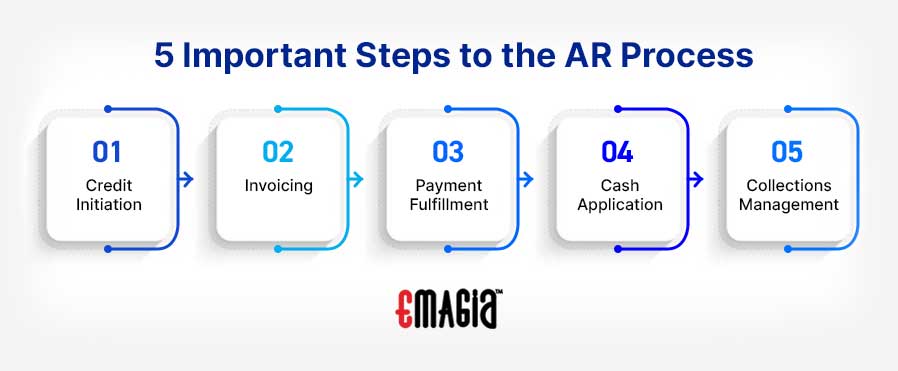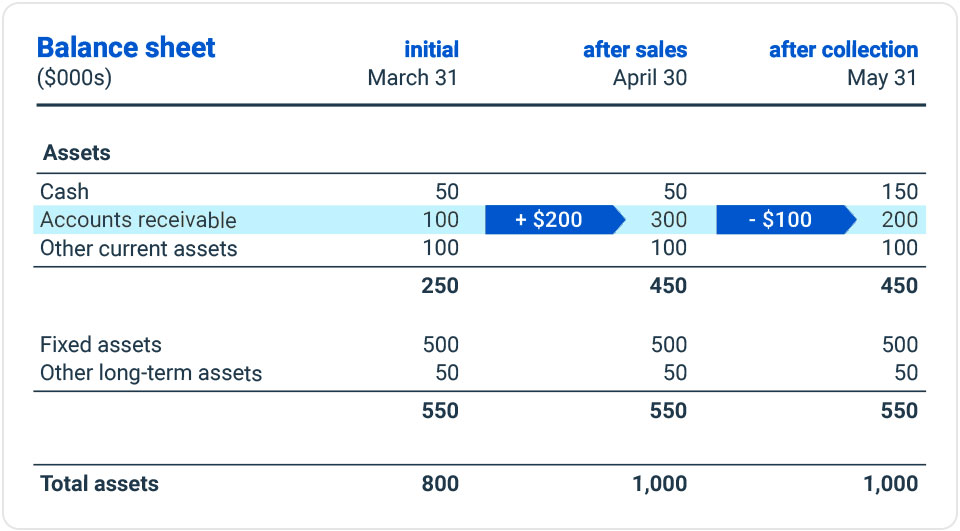Understanding the nature of accounts receivable (AR) and its classification is crucial to maintain accurate bookkeeping records. One doubt that always pops up regarding is if accounts receivable is a debit or credit. This article will detail the fundamental principles underlying the proper classification of accounts receivable.
Accounts receivable represents a debit entry, indicating the outstanding sum owed to a business by an individual or organization. The amount represents a financial obligation owed to the business, reflecting the outstanding balance yet to be collected.
There are various instances where debits can arise, representing amounts owed to your business by customers for goods or services. Additionally, debits can encompass compensation owed to you for services rendered, outstanding wages due to employees who have received salary advances, and anticipated tax refunds from the IRS.
On the other hand, credit represents an opposite financial transaction, where the business becomes indebted to another business or individual. For instance, credits may include taxes owed by your corporation, expenses incurred for goods or services obtained from other companies, refunds to be issued to customers for returned products, and obligations to fulfill outstanding wages owed to workers.
What is Accounts Receivables?
AR has a vital role in business operations by encompassing the crucial responsibility of collecting funds owed by customers for goods or services provided on credit. Effective management of AR serves as a vital component for the prosperity of a business, as it facilitates the maintenance of a robust cash flow, enhances customer satisfaction, and contributes to profitability.
Receivables refer to the outstanding debts clients owe your business for the products or services received. These receivables are considered valuable assets for your business and can serve as collateral for obtaining loans. In contrast, payables represent the debt your company owes to other entities or individuals.
Onboard Customers 5x Faster with AI-powered Credit Automation. Download Your Guide

What is the Accounts Receivable Process?
There are 5 important steps to the AR Process:
- Credit Initiation: The AR process begins by extending credit to a client, granting them the ability to obtain goods or services immediately while deferring payment to a later date.
- Invoicing: Subsequently, the AR team proceeds with the invoicing phase, where a notification is sent to the customer, indicating the amount due and the payment deadline.
- Payment fulfillment: If the process unfolds as expected, the customer fulfills the payment by remitting the total amount. This can be facilitated through automated tools, streamlining the digital payment process for the customer.
- Cash application: Upon receipt of the payment, the AR team proceeds with the cash application stage, which entails matching the received payment to the corresponding invoice recorded in the AR ledger.
- Collections management: If the customer fails to make the payment within the specified timeframe, the account becomes delinquent, prompting the AR department to undertake collections efforts. These actions may involve escalating notices, applying late fees, transferring the account to collections agencies, and if necessary, pursuing legal recourse to recover the outstanding amount.
Accounts Receivable Post Raising of Invoices
Typically, the business initiates the provision of products or services to the client, fulfilling its commitment. Once the obligations are fulfilled, an invoice is generated, and the cash flow is initiated.
If the customer settles the payment based on the invoice, the trade receivables figure will always remain positive. It signifies that the entity is entitled to receive a specified amount upon completion of the agreed-upon period. After fulfilling accounts receivable, they will be recorded as debits and classified as assets on the balance sheet.
Digital B2B Credit Risk Management Best Practices. Download eBook
Accounts Receivables in Case of Advance Payment
The payment will be received initially, followed by the provision of products or services, and subsequently, invoices will be generated. In this scenario, the figures for accounts receivable will display a negative value.
This signifies that the entity is obliged to fulfill the committed obligations within a predetermined period and according to specified terms and conditions. The advance payment received will be credited since it is associated with the services owed to the creditors.
Accounts Receivable Balance Sheets
Below is an example of an AR Balance Sheet:

What are Credit Terms?
When a client purchases a business on credit, they commit to making the payment later, usually within a specified period, such as 30 or 60 days. This period represents the credit terms, commonly indicated as “net 30” or “net 60” depending on the agreed-upon timeframe.
To encourage prompt payment, you can employ favorable credit terms that provide an incentive for early settlement, such as offering a discount for payments received within 10 or 15 days. By incentivizing faster payment, you can expedite cash flow, thereby increasing the available resources for your business to operate and expand within the designated timeframe.
What is a Credit Balance in AR?
Although it is common to encounter credit balances in accounts receivable, consistently experiencing this situation may indicate potential issues with your billing and collection processes.
To mitigate this problem, companies can proactively implement a credit balance policy, which establishes structured billing procedures and safeguards the maintenance of a healthy cash flow. By doing so, businesses can ensure that their billing and collection practices are well organized and manage credit balances within acceptable limits.
Conclusion
In conclusion, accounts receivable is an important part of a business’s financial transactions. It represents the amounts owed by customers for goods or services provided on credit.
While accounts receivable is an asset, its classification as a debit or credit entry depends on the perspective of the accounting equation and the double-entry bookkeeping system. From a client perspective, accounts receivable is seen as a debit entry because it represents an amount owed to the business.
FAQs
Why is AR debited?
Because AR is an asset, it is debited.
Can AR be a credit?
If there is a sum that a company owes to a client, AR is a credit.
How is AR recorded?
AR is recorded in the balance sheet as an asset.
What kind of account is AR?
AR is considered an asset account.
Are expenses supposed to be debited or credited?
Expenses are usually debited.









